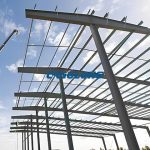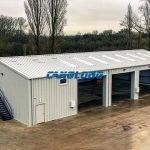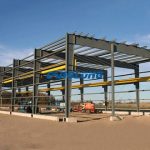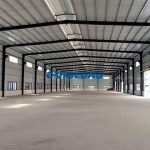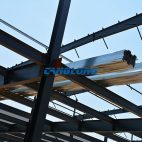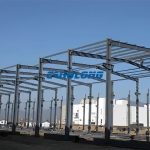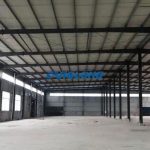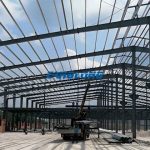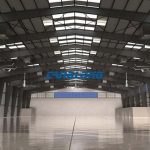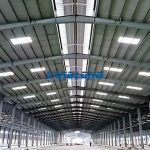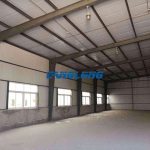Connection of long span steel structure members
The structural members of steel structure buildings include two basic types: members and cables. The resulting connection mode can be divided into cable to cable connection, bar to bar connection, and cable to bar connection. Whether it is a plane structure, a space structure or a long span steel structure, the complexity of the steel structure system will not lead to more types of connections due to the linear characteristics of individual members, and the complex connections can be seen as a combination of these three basic types.
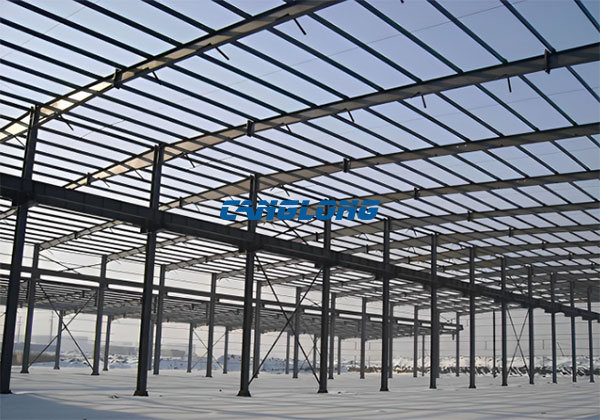
ONE. Cable to cable connection
The cable only bears tension in the steel structure system, the internal force remains unchanged along the cable axis, and the cable section will not change due to the length change. The connection features are as follows:
- 1. Connections at the ends must be made by means of cable sleeves.
- 2. The connection in the middle of the cable can be completed by various clamps.
- 3. The connection of multiple cables requires the design of new joints.
There are differences according to different cable and cable combination modes. For example, the common single-layer or double-layer cable structures can also have parallel or radiation forms according to the different arrangements. The light weight and efficiency of cable net cater to people’s common pursuit of lightness and transparency. The glass roof of the outdoor square of the headquarters of Banca Popolaredi Lodi in Italy designed by Piano is a stressed structure composed of two groups of cable nets connected with each other. The glass is sandwiched in the middle of the structure and is strengthened and stabilized by horizontal connecting cables, which are fixed on the surrounding concrete walls. All nodes are connected by cables. The light and transparent roof shows the advantages of cables in specific occasions.
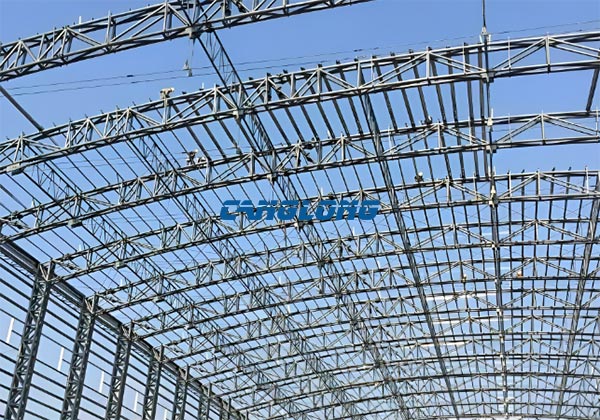
TWO. Connection between members
Bars appear earlier than cables and are used more widely. Because bars can be both tensioned and compressed, the connection design between bars is more complex and changeable than cables. The factors that determine the design of member connection mainly include the following two aspects:
- 1. The intersection angle between members.
- 2. Section form of each member. The former is determined by the steel structure system, while the latter can select different section steels or combine them in the connection design stage to facilitate the design of connecting members.
When the intersection angle is not vertical, the member section should be carefully selected to reduce the difficulty of joint design. In the beam column connection of an information center in Berlin, the round steel pipe column was abruptly cut off, and then welded to the I-beam with multiple steel plates. The connection seemed very mechanical and rigid. In contrast, in the design of beam column connection at the roof of Hanover Exhibition Hall designed by Herzog, on the one hand, cables are selected to avoid non vertical connection between members. On the other hand, the decomposition and circular change of the square steel tube column at the connection make the connection transition between the square steel tube column and the circular steel tube beam natural and reasonable.
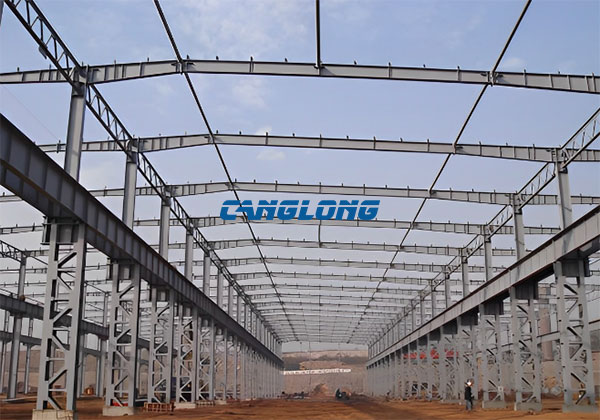
THREE. Connection of cable and rod
Although the cable is the most consistent with the material properties of steel, it is a flexible component with only unidirectional tensile properties, so the structural system composed of cable and member can obtain the dual advantages of lightness and stability. For example, the tension string structure is very popular in the field of large span in recent years. Even in small span buildings, the combination of cables and members is quite common.
The connection design shall adopt different connectors according to the continuity of cables. The connection at the end of the cable needs to be fixed to the rod by a series of components such as cable sleeve, bolts and welding pads. This connection program is simple and reasonable in structure, and is also widely used. At the same time, two different ways can be selected: cable sleeve clip welding pad or welding pad clip cable sleeve. For example, in the redevelopment project of the old sea port in Genoa, Italy, the above two methods were used for the connection between the cable membrane and the rod in different layers painted with gray and white respectively.
However, it can also be directly combined with the member through the special design of the cable sleeve. It should be noted that the omission of the welding lug means that the cable sleeve must assume the function of transforming the angle between the cable and the member. For example, the connection between the cable and the base of the Gibalo Cultural Center: the cable sleeve with exaggerated and powerful scale and a certain angle of rotation integrates the function of the welding pad, making this node unique in such connection. For the connection in the middle of the cable, the cable clamp and cable clamp (welding method can also be used in a few cases) can be used to fix the position of the cable and the rod.
